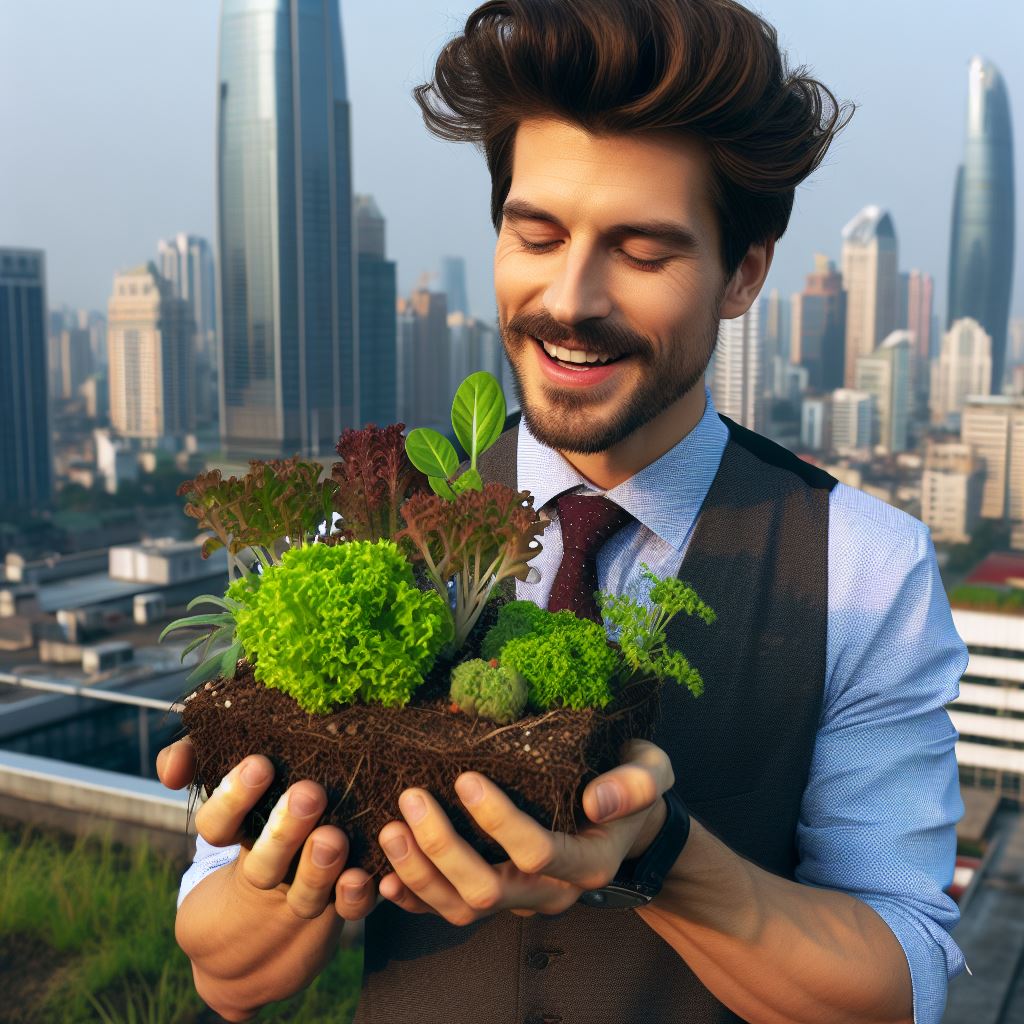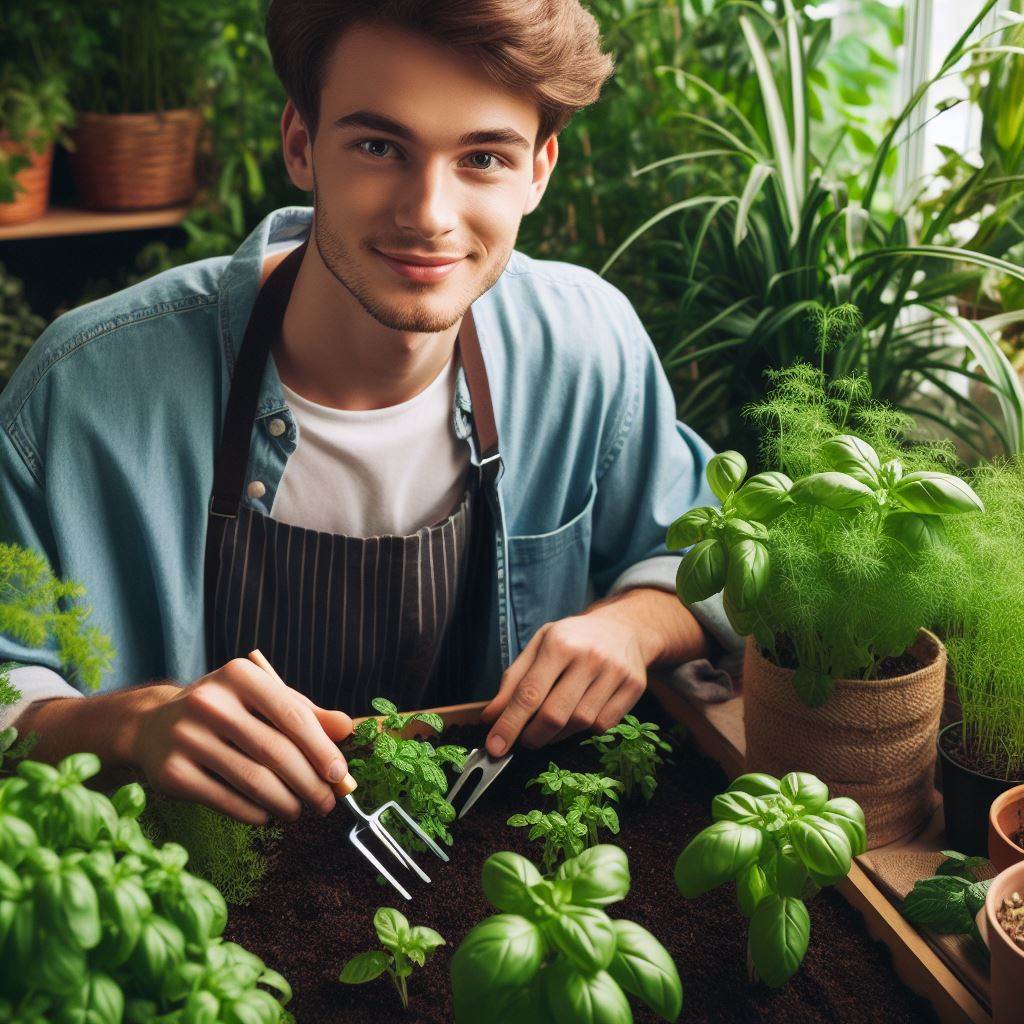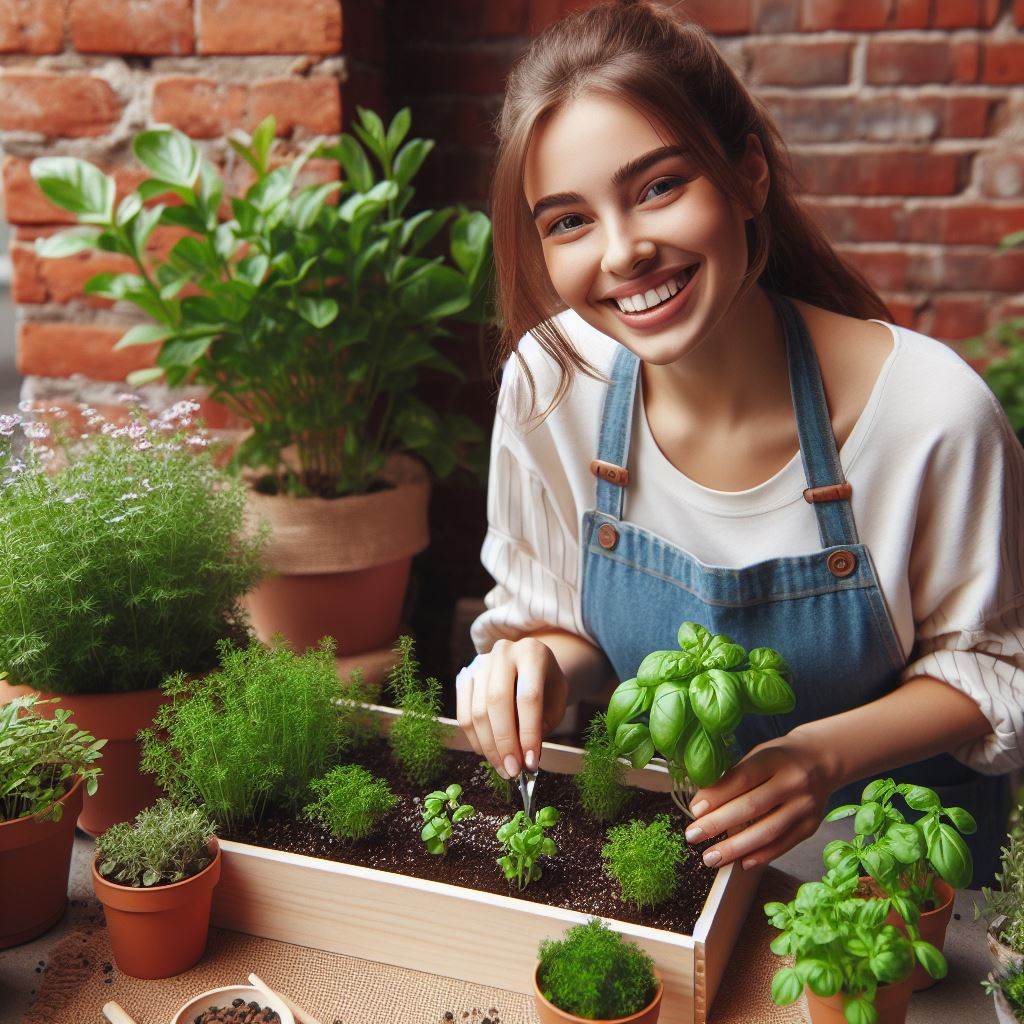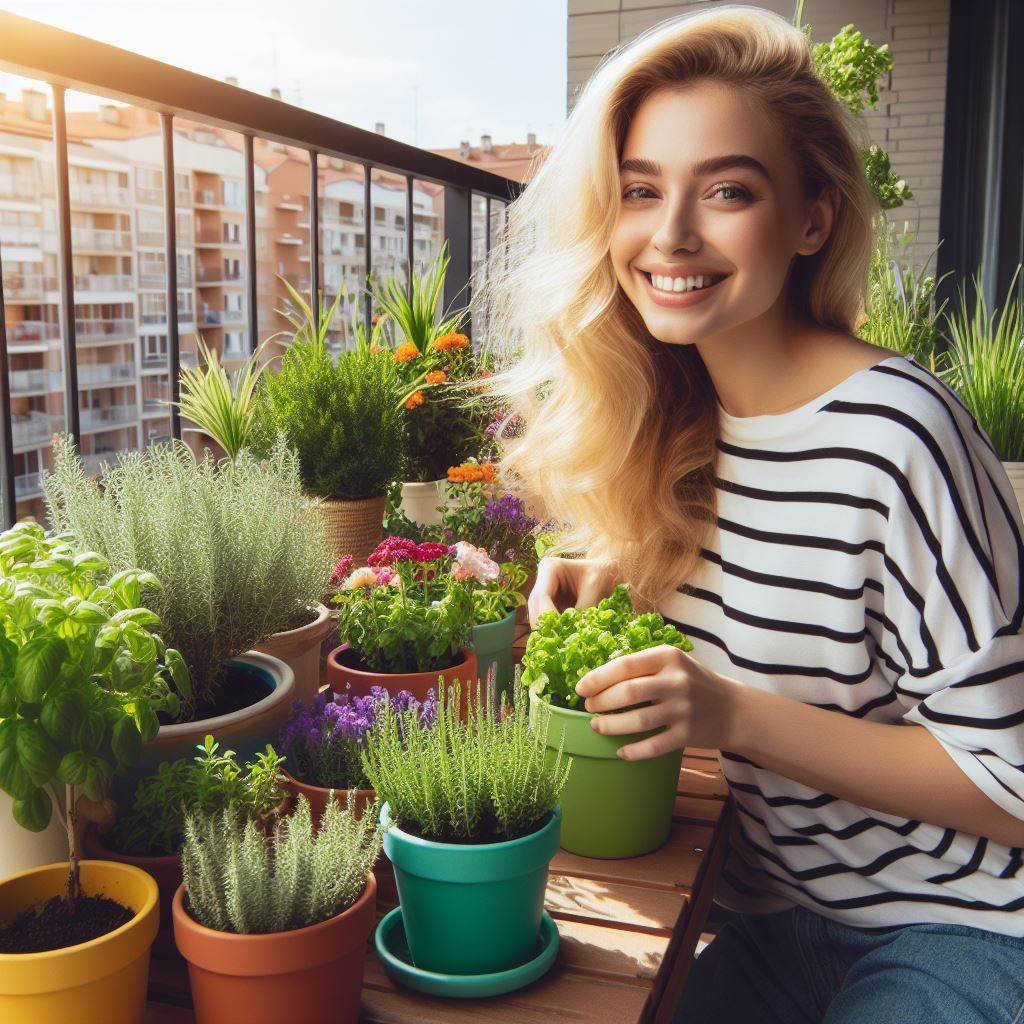Introduction
Importance of indoor gardening
Let’s Explore Indoor Gardening: Veggies & Fruits Year-Round
Indoor gardening is a valuable practice that allows us to grow vegetables and fruits throughout the year.
The importance of indoor gardening lies in its ability to provide us with fresh, organic produce regardless of the season.
Overview of the benefits of growing veggies and fruits year-round
By growing veggies and fruits year-round, we can ensure a constant supply of nutritious, homegrown food.
Indoor gardening also offers benefits such as saving money on grocery bills and decreasing our carbon footprint.
With proper care and attention, we can create an indoor garden that thrives with a variety of crops.
One advantage of indoor gardening is the control we have over the environment, which allows for optimal growing conditions.
We can adjust factors like temperature, humidity, and lighting to meet the specific needs of different plants.
Growing veggies and fruits indoors also eliminates the risk of pests and diseases that outdoor gardens may face.
Additionally, indoor gardening is a great solution for those living in urban areas or with limited outdoor space.
It allows people to experience the joy of gardening and enjoy the benefits of homegrown food, even in small apartments.
Therefore, indoor gardening offers numerous advantages, from providing fresh produce year-round to saving money and reducing our environmental impact.
With the right knowledge and dedication, anyone can embark on this rewarding journey of indoor gardening.
Getting started with indoor gardening
Indoor gardening offers an exciting opportunity to cultivate fresh produce year-round, right in the comfort of your home.
To embark on a successful indoor gardening journey, it’s essential to get started with the right approach.
Transform Your Agribusiness
Unlock your farm's potential with expert advice tailored to your needs. Get actionable steps that drive real results.
Get StartedHere’s a detailed guide on how to begin indoor gardening:
Choosing the Right Location
- Assess Available Space: Evaluate the space in your home where you intend to set up your indoor garden. Consider factors like natural light exposure, temperature fluctuations, and available floor or shelf space.
- Considering Lighting Options: Determine the lighting conditions in your chosen location. While natural light from windows is ideal, you may need to supplement with grow lights, especially in areas with limited sunlight.
Selecting the Right Plants
- Understanding Plant Requirements: Research the specific needs of plants you wish to grow indoors. Consider factors like light intensity, watering frequency, humidity levels, and temperature preferences.
- Researching Suitable Varieties: Choose plant varieties that thrive in indoor environments. Opt for compact varieties suitable for container gardening, such as herbs, leafy greens, dwarf vegetables, and certain fruiting plants like tomatoes or peppers.
Gathering the Necessary Tools and Supplies
- Containers and Pots: Select containers or pots that provide adequate drainage and space for plant roots to grow. Consider options like plastic or ceramic pots, hanging baskets, or vertical gardening systems.
- Potting Soil and Fertilizers: Use high-quality potting soil specifically formulated for indoor plants. Consider organic options or soil mixes designed for specific plant types. Additionally, choose fertilizers tailored to indoor gardening needs to provide essential nutrients for healthy growth.
By following these steps and investing in the right tools and supplies, you can create a thriving indoor garden.
Whether you have a spacious sunroom, a bright kitchen window, or a cozy apartment balcony, indoor gardening allows you to enjoy the pleasures of gardening regardless of your living space.
Moreover, it provides numerous benefits, including access to fresh, homegrown produce, enhanced indoor air quality, stress relief, and aesthetic enhancement of your living space.
Remember to monitor your indoor garden regularly, adjusting watering and lighting as needed, and watch your plants flourish.
With a bit of care and attention, your indoor garden can yield bountiful harvests and bring joy and satisfaction throughout the year.
So, roll up your sleeves, unleash your green thumb, and embark on an exciting indoor gardening adventure today!
Read: Patio Herb Gardens: Simple Steps to Start
Creating the ideal indoor environment
Indoor gardening has gained popularity in recent years as more people embrace the idea of growing fresh vegetables and fruits year-round.
The ability to cultivate a variety of plants indoors allows individuals to have a sustainable source of produce and enjoy the benefits of gardening regardless of the season.
However, to ensure successful indoor gardening, it is essential to create the ideal indoor environment that meets the specific needs of plants.
This section will explore the key factors to consider when creating the perfect indoor environment for your plants.
Proper lighting
Choosing between natural and artificial light sources
When it comes to indoor gardening, one of the critical factors to consider is lighting.
Natural light is the ideal choice as it provides a full spectrum of wavelengths necessary for plant growth.
However, not all indoor spaces have access to sufficient natural light. In such cases, artificial light sources, such as fluorescent or LED grow lights, can be used as an alternative.
Understanding light requirements for different plants
Different plants have varying light requirements. Some plants thrive in direct sunlight, while others prefer partial shade.
It is crucial to research the specific light needs of the plants you intend to grow indoors and provide the appropriate lighting conditions accordingly.
Adjusting the light intensity and duration can significantly affect plant growth and yield.
Controlling temperature and humidity
Temperature and humidity are crucial factors that influence plant growth and health.
Maintaining the right levels can help optimize indoor gardening success.
Adjusting temperature settings
Most plants prefer a temperature range of 65-75 degrees Fahrenheit (18-24 degrees Celsius) during the day and slightly cooler temperatures at night.
It is important to keep indoor temperatures within this range and avoid extreme fluctuations.
Using a thermostat or temperature controller can help maintain a stable environment for your plants.
Using humidifiers or dehumidifiers when needed
Humidity levels in indoor environments can vary, depending on factors such as climate and ventilation.
Showcase Your Farming Business
Publish your professional farming services profile on our blog for a one-time fee of $200 and reach a dedicated audience of farmers and agribusiness owners.
Publish Your ProfileSome plants thrive in high humidity, while others prefer drier conditions.
It is essential to monitor the humidity levels and use humidifiers or dehumidifiers to adjust accordingly.
This will help prevent issues like mold growth and wilting.
Monitoring air circulation and ventilation
Proper air circulation and ventilation are crucial for maintaining a healthy indoor garden environment.
Importance of air flow for plant health
Good air flow helps plants perform vital functions like transpiration and nutrient absorption.
It also helps prevent the buildup of pests and diseases.
Adequate air circulation ensures that carbon dioxide is distributed evenly, allowing plants to carry out efficient photosynthesis.
Strategies to improve ventilation in indoor gardens
To enhance air circulation, you can use fans or natural ventilation methods like opening windows or using vents.
Placing fans strategically can help create airflow around plants and prevent stagnant air pockets.
Regularly removing any obstructions or clutter near plants also aids in maintaining proper ventilation.
Creating the ideal indoor environment for your plants is essential for successful indoor gardening.
By providing proper lighting, controlling temperature and humidity, and monitoring air circulation and ventilation, you can ensure optimal growth and yield from your indoor garden.
With careful attention to these factors, you can enjoy a bountiful harvest of nutritious fruits and vegetables year-round.
Read: Future Farming: The Rise of Aquaponics
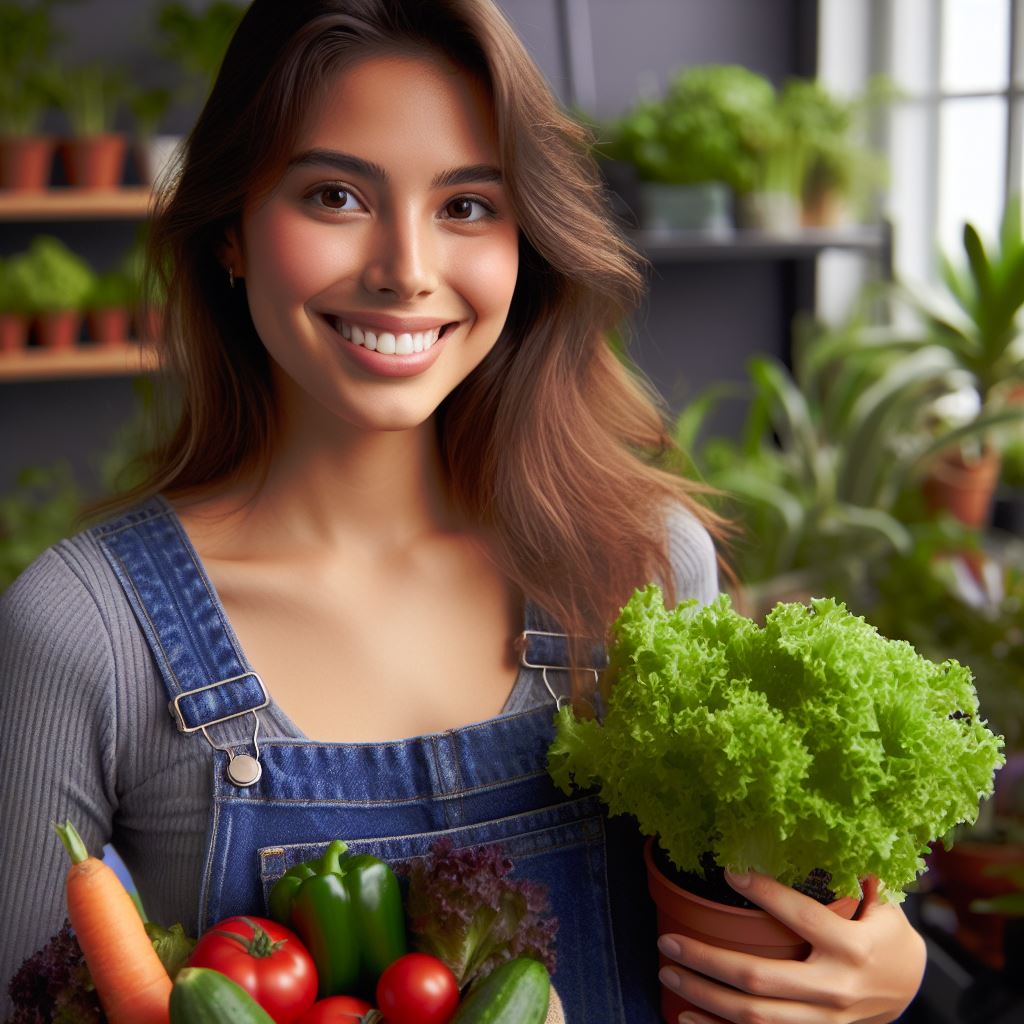
Plant care and maintenance
Indoor gardening offers a convenient way to grow fresh produce year-round, but proper plant care and maintenance are crucial for success.
Here’s how to ensure your indoor garden thrives:
Watering
- Understanding Watering Needs: Different plants have varying water requirements. Research the specific needs of each plant species to avoid over or under-watering.
- Techniques for Proper Watering: Use the right watering techniques to prevent waterlogging and ensure even moisture distribution. Water plants when the top inch of soil feels dry, and avoid wetting foliage to prevent fungal diseases.
Providing Adequate Nutrition
- Choosing the Right Fertilizers: Select fertilizers formulated for indoor plants, such as balanced liquid fertilizers or slow-release granules. Consider organic options for environmentally friendly gardening.
- Establishing a Feeding Schedule: Develop a feeding schedule based on plant growth stages and fertilizer recommendations. Apply fertilizers according to label instructions to avoid nutrient imbalances.
Managing Pests and Diseases
- Identifying Common Pests: Learn to recognize common indoor garden pests like aphids, spider mites, and fungus gnats. Regularly inspect plants for signs of infestation, such as yellowing leaves or sticky residue.
- Implementing Organic Pest Control: Use natural pest control methods to minimize chemical exposure and maintain a healthy indoor environment. Options include introducing beneficial insects, using neem oil or insecticidal soap, and practicing good hygiene to prevent pest outbreaks.
By following these plant care and maintenance tips, you can nurture a thriving indoor garden that yields an abundance of fresh vegetables and fruits throughout the year.
Remember to observe your plants closely, adjust care practices as needed, and enjoy the satisfaction of growing your own food indoors.
With a little effort and attention, your indoor garden will flourish and provide nutritious, homegrown produce for your table.
Read: Container Gardening: Veggies on Your Patio
Gain More Insights: Climate Zones: Planting for Your Area
Harvesting and enjoying the fruits of your labor
Indoor gardening offers a rewarding experience that goes beyond nurturing plants and watching them grow.
The ultimate satisfaction comes when you get to harvest and enjoy the fruits of your labor.
However, knowing when to harvest and properly utilizing your harvested produce can make all the difference in the taste and quality of your homegrown veggies and fruits.
Recognizing signs of readiness for harvest
Monitoring plant growth and maturity
One of the most crucial aspects of successful harvesting is closely monitoring the growth and maturity of your plants.
Each crop has specific indicators that hint at the right time for harvesting.
Keep a keen eye on factors such as color, size, texture, and overall appearance as they determine the readiness for harvest.
Harvesting techniques for different crops
Different crops demand specific harvesting techniques to ensure optimal results.
For example, leafy greens are best picked by gently plucking the outer leaves, promoting continuous growth.
On the other hand, fruits like tomatoes and peppers are mature and ready for harvest when they are fully ripe, exhibiting vibrant colors and firm texture.
Understanding the distinct requirements of each plant ensures a successful harvest.
Storing and preserving the harvested produce
Proper handling and storage methods
To maximize the freshness and longevity of your harvested produce, it is crucial to handle and store them correctly.
Avoid bruising or damaging the fruits and vegetables during harvest.
Remove any dirt or debris and store them in clean, well-ventilated containers.
Some crops, such as root vegetables, can be stored in a cool, dark place, while others might require refrigeration to preserve their quality.
Exploring various preservation techniques
While enjoying the immediate harvest is delightful, it’s also essential to preserve the surplus for later enjoyment.
By exploring preservation techniques like canning, freezing, or dehydrating, you can extend the shelf life of your produce and savor their flavors all year-round.
Canning allows you to store fruits and vegetables in jars, while freezing maintains the freshness and nutritional value.
Dehydrating is an excellent option for herbs and drying certain fruits.
Enjoying the benefits of year-round harvest
Incorporating homegrown fruits and veggies into meals
Indoor gardening not only provides you with fresh produce but also allows you to elevate your culinary creations.
Showcase Your Farming Business
Publish your professional farming services profile on our blog for a one-time fee of $200 and reach a dedicated audience of farmers and agribusiness owners.
Publish Your ProfileIntegrate your homegrown fruits and vegetables into various recipes to enhance their flavors and nutritional value.
From colorful salads bursting with flavor to hearty soups and stir-fries, the possibilities are endless.
Sharing the abundance with friends and family
A fruitful indoor garden often produces an abundance of crops.
Don’t let your harvest go to waste! Share the joy and satisfaction of homegrown produce with your loved ones.
Give away extra veggies and fruits to friends, family, or even local food banks.
Your generosity will not only benefit others but also strengthen bonds and encourage a sense of community.
In short, harvesting, storing, and enjoying the benefits of year-round harvest in your indoor garden are crucial steps in your gardening journey.
By recognizing the signs of readiness for harvest, utilizing proper techniques for different crops, following appropriate handling and storage methods, exploring preservation techniques, and incorporating homegrown produce into your meals, you can savor the fruits of your labor throughout the year.
Share the abundance with others, spreading the joy and satisfaction of homegrown goodness.
Happy harvesting!
Read: Herbs & Greens: Hydroponic Gardening Easy
Conclusion
Indoor gardening offers a wealth of benefits, from providing fresh produce year-round to enhancing indoor air quality and reducing stress levels.
By summarizing the key points discussed in this blog section, readers can gain insight into how to embark on their indoor gardening journey successfully.
Firstly, selecting the right location is crucial.
Assess available space and consider lighting options to ensure plants receive adequate sunlight or artificial light.
Secondly, choosing the right plants is essential.
Understand each plant’s requirements and research suitable varieties for indoor gardening.
Lastly, gathering the necessary tools and supplies is vital.
Invest in containers or pots, quality potting soil, and appropriate fertilizers to support plant growth.
By following these steps and practicing proper plant care and maintenance techniques, readers can enjoy the satisfaction of growing their own food at home.
With patience, dedication, and a little green-thumb know-how, indoor gardening can become a fulfilling and rewarding hobby that provides a continuous supply of fresh, nutritious produce throughout the year.

